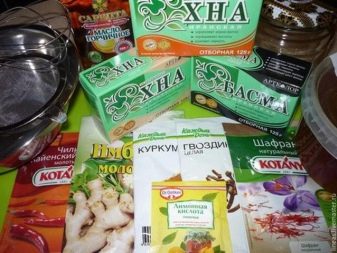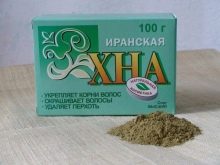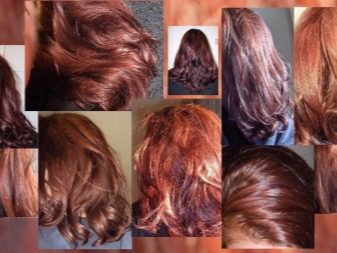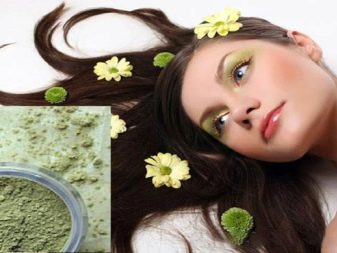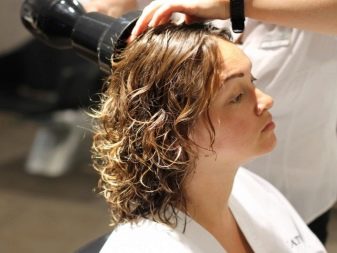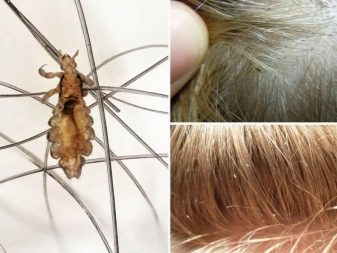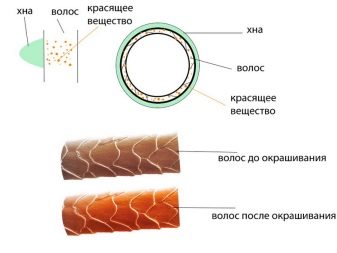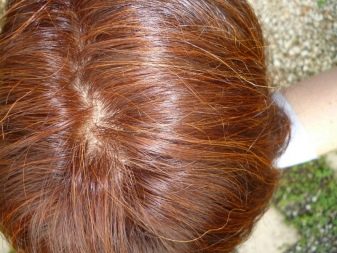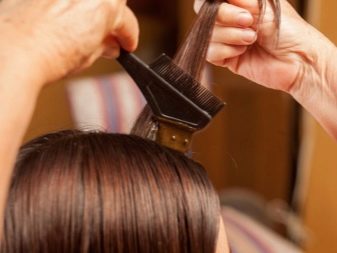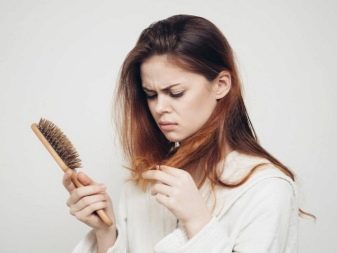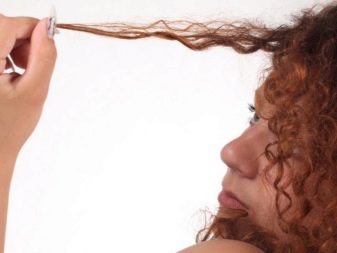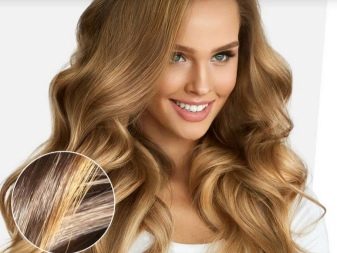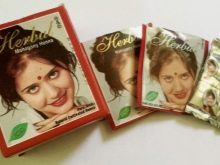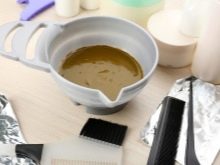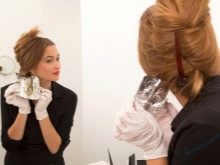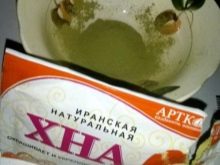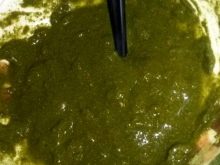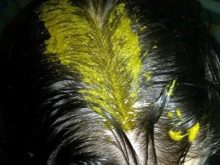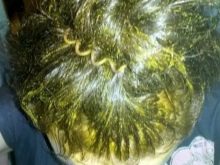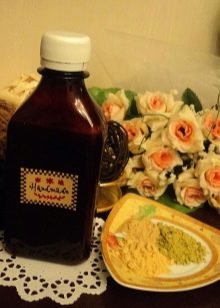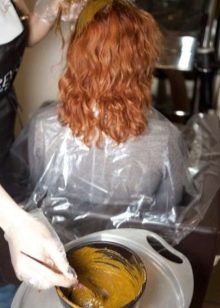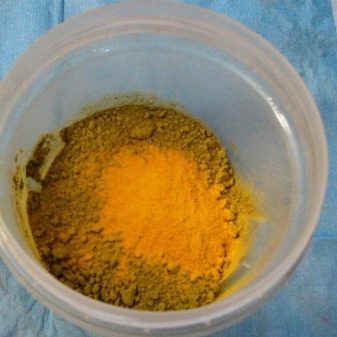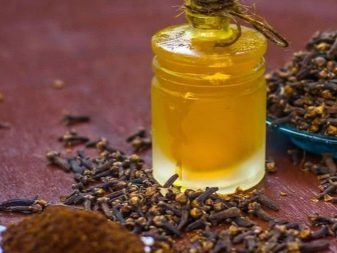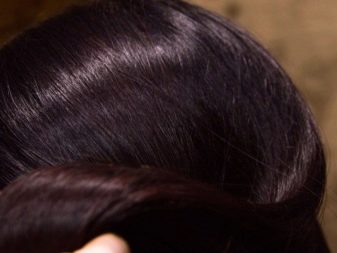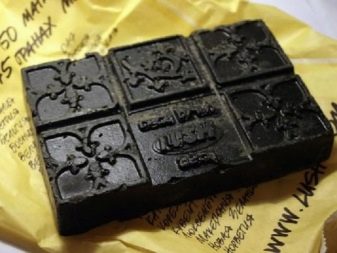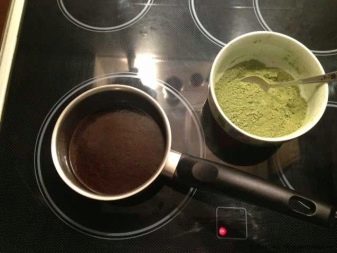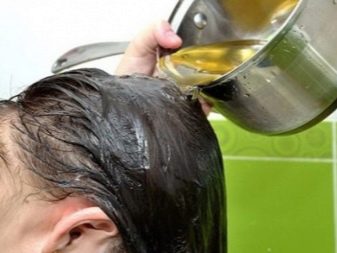Among the huge number of dyes known to mankind from time immemorial, henna is a special place - a natural product with many obvious advantages. The described tool gives a shade an eye-catching shade and makes it healthier, which is confirmed by both experienced specialists and ordinary consumers. It is not difficult to dye hair with henna at home: it is enough to know the basic rules for carrying out this procedure, which will be described later.
What it is?
The paint in question is a powdered product, which is the result of drying the leaves of Lawsonia by a non-prickly shrub common in North Africa and the countries of the East. The use of henna to change the tone of hair allows you to get a lot of spectacular shades - from golden honey to dark chocolate. The achievement of such results is facilitated by the use of various herbal supplements, the most sought-after of which are Basma, Ginger, Coffee and Cloves.
Several varieties of the described dye deserve special attention.
- Iranian. Such henna is considered the best in terms of price and quality, and therefore is the most popular. If this dye is used without additives, it gives the head of hair only one color - a rich red. Especially Iranian henna is useful for weakened hair, because it contributes to the accelerated recovery of their damaged structure.
- Indian The paint in question boasts 5 colors - dark chocolate, chestnut, burgundy, mahogany and golden. Like other types of henna, it is often used in combination with other components of plant origin, which significantly expands the range of shades obtained with its help.
- Sudanese. This product is especially popular in Africa and Saudi Arabia. Its use is justified in situations where you need to get a rich copper shade of hair, characterized by maximum resistance.
As for colorless henna, it is made from the stalks of lawsonium, therefore its composition does not provide for the presence of a coloring pigment. This product is used not to change the color of the hair, but to enhance its health - increase elasticity, get rid of dandruff, accelerate growth and normalize the functioning of the sebaceous glands. Other types of henna are worthy of mention, for example, pink, purple or black.
Such means are obtained by artificial means, therefore, their use must be treated with caution, paying particular attention to the study of the composition on the package.
Advantages and disadvantages
Practice shows that the positive qualities of the funds in question are much more than the negative ones. If you highlight the main advantage of the presented oriental paint, then this is naturalness, thanks to which you can not worry about the health of the transformed hair. Another obvious advantage of henna is ease of use, which allows you to dye your hair yourself, without resorting to the services of a specialist.
The remaining benefits of the described product include the following:
- positive effect on hair follicles;
- effective anti-dandruff (regardless of the reasons that provoked its development);
- restoration of the hair after the perm, performed with the use of aggressive chemical agents (even in cases where severe damage occurs);
- the return of shine lost by hair;
- simplified styling, which becomes more "obedient";
- noticeable hair enhancement minimizing the likelihood of hair loss;
- effective protection of hair from the aggressive effects of direct sunlight;
- moderate cost (in comparison with high-quality synthetic dyes);
- the impressive naturalness of the shade given to the hair (it is not possible to achieve this result with the help of chemical agents).
In addition, henna contributes to accelerated disposal of parasites (primarily lice) and many diseases of the scalp. Hypoallergenicity, due to the natural origin of the described product and the absence of ammonia in its composition, also deserves attention. It is possible to use henna for dyeing hair even during pregnancy and lactation, as well as in the presence of any chronic pathologies.
The list of shortcomings of the presented tool is as follows:
- the corrosiveness of the paint, which does not allow the girl to quickly change her own image, which is explained by the penetration of henna under the scales of hair and their subsequent “sealing” with a thin film; You can get rid of paint with the help of special masks (both in the salon and at home), but the solution of this problem will take some time;
- relatively low efficiency of dyeing gray hair; if there are too many, you will have to give up the use of the described means
- excessive use of henna leads to a gradual thinning of the hair, which negatively affects their health and appearance;
- dyeing hair with the product in question cannot be called fast; such a procedure takes twice or even three times more time than synthetic means, and is quite laborious.
Another feature that can not be attributed to the pluses of henna, is the impossibility of its use with the head of hair, colored chemical composition. Ignoring this circumstance can lead to an unpredictable visual result, so it is strongly not recommended by the vast majority of specialists. Apply a chemical agent on the hair, previously painted with henna, also does not work - because of the above-mentioned reason.
In addition, the girl will have to temporarily abandon the lamination and perm (in such situations, their effectiveness is significantly reduced).
How often can hair be dyed?
Many of the fair sex believe that henna can be used without any restrictions. Experts believe this opinion is erroneous and note that too frequent use of henna leads to the accumulation of dye in the hair structure. The logical outcome of this is the following troubles:
- gluing and clogging scales;
- weight gain strands;
- gradual fading of hair;
- increase in dryness and stiffness of hair.
To avoid this, it is necessary to adhere to the optimal frequency of staining - 1 time in 2 months. This value is sufficient to maintain the attractive appearance of the hair, which is explained by the excellent durability of the described oriental product. As for the correction, implying tinting of the growing roots, it can be carried out without restrictions.
Preparatory stage
Before you begin to dye henna hair at home, attention should be paid to the preparation of inventory and materials necessary to solve the problem, namely:
- disposable gloves and a cape that protect the skin and clothing from contamination;
- shower cap (if there is none, a regular polyethylene film will do);
- a comb, which is necessary for the rapid and convenient formation of strands;
- clamps (as an alternative, you can use hairpins, called "crabs");
- paint brush;
- high fat cream or petroleum jelly;
- tool for mixing the dye (stick or spoon);
- old towel;
- dishes for the preparation of the composition (the most suitable material is glass, since ceramic or plastic products tend to be colored).
Particular attention should be paid to the expiration date of the medium of interest: if henna is expired, its use must be abandoned. It is also advisable not to buy too cheap paint, due to the high probability of acquiring low-grade product.
In order to determine the shade that henna will give the hair, it is necessary to carry out a simple experiment by dyeing this means with 1–2 thin strands. If the result is completely satisfactory, you can start a full-fledged procedure, and if not, you can resort to changing the composition using additives, which will be discussed a little later.
As for shampooing, it provides such two possible options as:
- immediately before hair dyeing is important for those who use henna for medicinal purposes;
- 2-3 days before the scheduled procedure - this solution is suitable in most cases.
Staining technology
As mentioned earlier, the henna hair dyeing procedure is not complex, so it can be successfully performed at home. To do it correctly, you must follow the following procedure:
- prepare the composition, pour the right amount of henna with hot water (but not boiling water) - dyeing short hair involves the use of 100 g of dry dye, medium - 150-200 g, long - 250–300 g, very long - 400–500 g; it is irrational to dilute excess paint, as it can be used only in freshly prepared form; the consistency of the product used should resemble a slurry or thick sour cream, thus avoiding its draining after application;
- when it is necessary to transform dry hair, it is desirable to add the prepared means to add 15 ml of cream or several drops of unrefined vegetable oil;
- you need to prepare a water bath that prevents the cooling of henna (the latter must be applied to the head of well-heated hair);
- for dyeing fine hair it is rational to use a compound in which water is replaced by kefir; Before starting to breed henna, the fermented milk product should be well heated;
- wear gloves and a cape, then lubricate the hairline with a high-fat cream, and it is also advisable to apply oil to the scalp - to avoid the appearance of traces of the staining;
- divide the hair into parts (top, side, back), form several strands of suitable thickness from each one and paint them one by one from the roots to the tips; Begin the described procedure from the back of the head, paying particular attention to the treatment of gray hair on each of the transformed areas;
- it is necessary to distribute the paint on the hair quickly and carefully, stabbing the henna-treated strands and proceeding without delay to the next; after the application of the composition is completed, it is necessary to massage the hair and comb it with a comb;
- put a shower cap or plastic wrap on the head and cover it with a towel; to achieve a light effect, you need to wait about half an hour, while a full-fledged painting provides for a much longer time period - 60, 90 and even 120 minutes;
- the next stage is washing the head with warm water; it is desirable to refuse the use of shampoo, but in some cases it will not be possible to do a full rinse without the help of a synthetic agent;
- if necessary, the hair is additionally processed by air conditioning; Finally, it remains to dry the hair - with a hair dryer or in a natural way.
Important! As a rule, blondes spend from 20 to 30 minutes spending the least amount of time on henna dyeing their hair. As for the owners of dark hair, then for them this value is three times greater.
Getting the desired shade
If the color of the acquired dye does not fully correspond to the preferences of the girl, it can be changed to a more suitable one, using additional ingredients, namely:
- saturated red - add about 20 g of grated ginger to the prepared composition;
- copper - mix henna with 5 g of turmeric and the same amount of ground cinnamon; the next step is to dilute the resulting combination with tightly brewed black tea;
- golden honey - add to the paint 1 tbsp. l liquid honey and 5 g ground cloves;
- black cherry - mix henna with strong infusion of Sudanese rose (karkade).
Special attention is given to the rich chocolate color, which is deservedly popular with lovers of beauty and style. To prepare the composition, allowing to dye hair in a given shade, you must perform the following steps:
- finely rub 2 pieces of tiled henna (or take a comparable amount of powdered dye);
- brew 50 g of ground coffee in 150 ml of water and let it brew, not allowing the temperature to fall below + 40 ° C;
- mix both ingredients thoroughly;
- dilute the prepared composition with hot water, if it turned out to be too thick;
- heat the mixture in the bath and start painting.
Another popular solution to get a dramatic milky-chocolate shade of hair, is the addition of basma, a grayish-green powder derived from indigo leaves and mixed with henna in a 1: 1 ratio. Before you start staining, you need to brew strong coffee or black tea, used for dilution of the prepared combination. To get a more saturated color, it is enough to change the ratio of the main ingredients in favor of basma.
Not less effective way to give a rich brown color to the hair - use henna and ground cinnamon. To solve the problem in question, it is sufficient to mix both specified components in equal quantities.
Further care
Depending on the specifics of the hair, determined by their structure and some other features, henna can last from several weeks to 3 months. To keep the color as long as possible, the following recommendations should be considered:
- during the first 2-3 days after the completion of dyeing, it is advisable not to wash your hair with shampoo and balm; this is due to the fact that during this time the pigment continues to appear;
- at the end of the hair dyeing procedure with henna, you can rinse the hair with infusion of sage or rosehip, 1 tsp. which is diluted in 1 l of cold water (if there are no herbs, the same amount of table vinegar will do);
- regularly use a shampoo that helps preserve color; a prerequisite - the absence of silicone and dandruff components in the composition of the used means;
- minimize bathing in chlorinated water and exposure to hair in direct sunlight.
Important! In addition, professionals recommend special tinted shampoos, which include henna.
If a girl wants to get rid of the described dye, she can use two methods to solve this problem.
- The first involves the use of 70% alcohol, applied to the hair and left for 5-10 minutes, followed by processing of hair with vegetable oil. You need to keep this mask under the plastic for half an hour, after which it is thoroughly washed off with a mild shampoo. In order to achieve the desired result, after 2-3 days, the procedure described above is repeated.
- The second option involves repeated rinsing hair. with the use of vinegar and soap, as well as the use of masks based on kefir and yeast.
Henna is a real find for all women who prefer natural colors to synthetic ones. By following the simple rules of using this product, you can achieve excellent visual results, like a magnet that attracts the attention of others.
How to dye hair with henna at home, see the following video.



